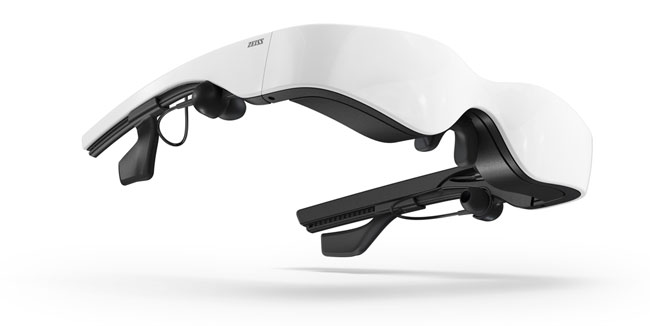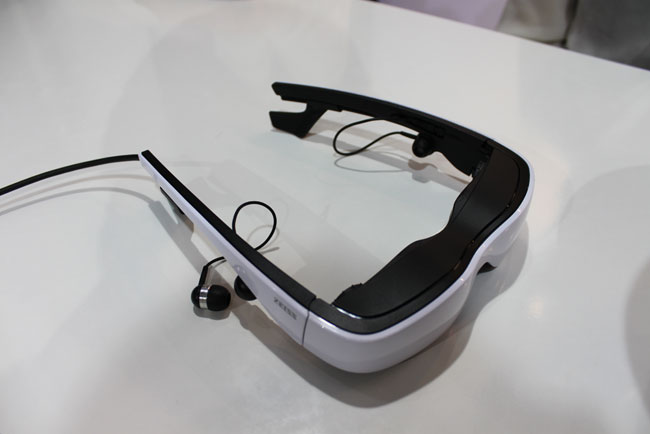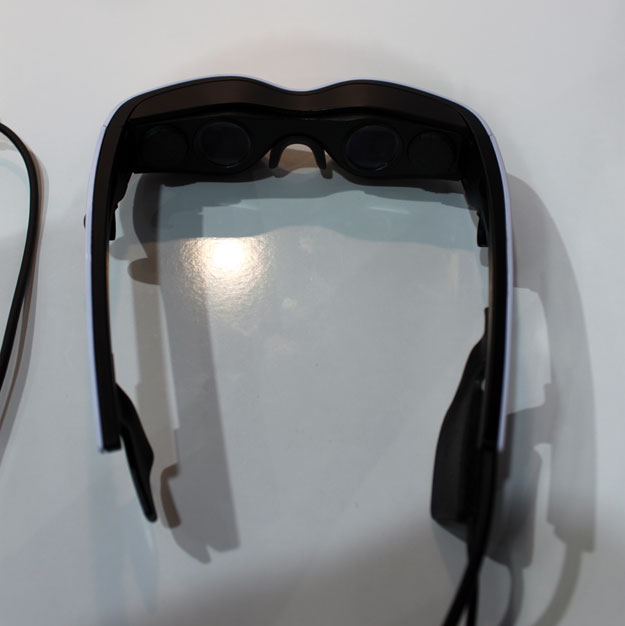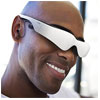FlatpanelsHD featured the Carl Zeiss OLED Cinemizer in March. At IFA we had an opportunity to try out the product – with and without the head tracking motion sensor. Here are our hands-in impressions.
Hands-on with the OLED Cinemizer
Carl Zeiss’ OLED Cinemizer is not very different from Sony's Personal 3D Viewer that we reviewed some time ago. However, Carl Zeiss has implemented a better screen adjustment system to ensure a perfect fit.

FlatpanelsHD tried Carl Zeiss’ OLED Cinemizer at IFA
And the screen adjustment system is one area that sets Carl Zeiss apart from Sony, because it is significantly better. When we tested Sony’s headset we always felt that the edges of the screen were a bit fuzzy but with Carl Zeiss headset we did not experience the same fuzziness after adjusting the screens. Pictures were sharp and details well-defined. The screens are adjusted with two separate wheels and you can fine tune the distance separately for each eye. This is not possible on Sony’s product. Instead, it has some pre-defined steps.
The actual screens inside are still relatively low-res but 2D and 3D pictures still look quite convincing. Detailing is not as high as on a Full HD TV but not far off. As for 3D, the effect is great as the screens are completely separated for each eye, which means that no 3D crosstalk occurs.
Carl Zeiss technical implementation is not much different from Sony’s and one of the major weaknesses remains. Only a limited area of the field of vision is utilized. You generally feel as if you are looking at a square screen in front of you in a completely dark room – and that is basically what you are doing. That also means that our dream of a Virtual Reality future is still some years away.

The Carl Zeiss OLED Cinemizer
A head tracking motion sensor
Carl Zeiss had also brought their head tracking motion-enabled edition. With this you can look around in the virtual world only by moving your head. The motion sensor is extremely responsive and the delay is practically eliminated. In fact, the sensor was almost too response, as it is very hard to keep your head completely still when wearing a headset. Therefore you also feel that the virtual world “shakes” – just a bit.

Here you see the model with the head tracking unit installed. It is slightly heavier
The demonstration was quite good, though. The motion tracking was working but it was a shame that Carl Zeiss used such bad image material. We were looking out of some kind of window into a computer generated world but the graphics looked like a 10-year old gaming console. We definitely see the potential here – the system just needs some adjustments and tweaks.
All in all, Carl Zeiss OLED Cinemizer is not that different from Sony’s Personal 3D Viewer but the screen adjustment system a clear advantage. However, both products still need improvement before we can truly embrace them.
 Hands-on with Carl Zeiss' OLED Cinemizer">
Hands-on with Carl Zeiss' OLED Cinemizer">
